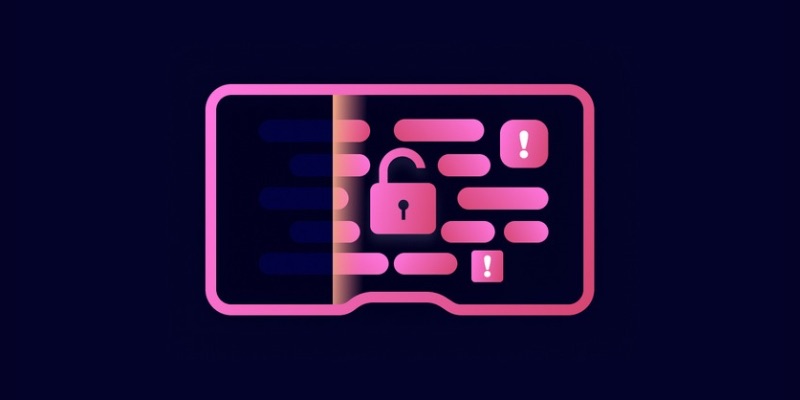What is Threat Hunting in Cyber Security?
June 24, 2023, 7 min read
Actively searching networks, endpoints, and datasets for malicious, suspicious, or risky activities that have evaded detection by existing tools is known as cyber threat hunting. Thus, cyber threat detection differs from cyber threat hunting. A threat hunter can benefit from threat detection, which takes a more passive approach to monitoring data and systems for potential security issues. Identifying and classifying potential cyber threats ahead of time has become much easier thanks to the evolution of proactive cyber threat hunting strategies that incorporate new threat intelligence on top of previously collected data.
The security team must never assume that their measures are foolproof. They have to be ready for any potential danger at any time. Cybersecurity threat hunting is a proactive approach to security that, unlike traditional threat detection methods, generates hypotheses based on knowledge of threat actor behaviours and then actively searches the environment to verify those hypotheses. In threat hunting, the starting point isn’t an alert or Indicators of Compromise (IOC), but rather, more in-depth analysis and investigation. When a warning or IOC is issued, it is often the hunter’s efforts that generate and provide evidence for it. The presumption of cyber threat hunting is that a breach has already occurred or will soon. Instead of relying on the latest tool, security personnel hunt for potential dangers in their immediate vicinity.
The Logic of Threat Hunting
The availability of useful information is crucial to the success of any cyber threat hunting effort. That is to say, a company needs a data-gathering enterprise security system to even get started. Its data can be used as a starting point for tracking down threats.
Security teams can benefit from the addition of cyber threat hunters, who provide a human element to complement automated systems. They are experts in computer security who look for, record, keep tabs on, and eliminate potential dangers. It is preferable to have security analysts on staff who are familiar with the business’s inner workings, but external analysts can be useful in certain situations.
Hunting for potential dangers in an area is an art form. It exceeds the capabilities of more common detection tools like security event and information management systems (SIEM) and endpoint detection and response systems (EDR). Hunting for threats by poring over security logs. They look for suspicious behaviour patterns that a computer may have missed or judged to be resolved when in fact they are looking for hidden malware or attackers. They also aid businesses in implementing security patches to stop the same cyberattack from happening again.
The Models of Hunting
An intelligence-based hunting model is a reactive approach to hunting that relies on indicators of compromise gleaned from security intelligence services. Once the SIEM and threat intelligence have established a baseline, the hunt can proceed according to those established parameters.
Intel-based hunts can make use of indicators of compromise (IoCs), hash values, IP addresses, domain names, networks, or host artifacts provided by intelligence sharing platforms like computer emergency response teams (CERT). From these systems, an automated alert can be exported in the form of a structured threat information expression (STIX) and a trusted automated exchange of intelligence information (TAXII) and fed into the SIEM (link resides outside of ibm.com). The threat hunter can then look into the malicious activity before and after the alert was generated by the SIEM to determine if the environment was compromised.
Exploring Possible Explanations
To find potential threats, the hypothesis hunting model takes a preventative approach and makes use of a special library. Consistent with the MITRE ATT&CK framework, it employs international detection playbooks to spot APT gangs and malware assaults.
Using the attackers’ IoAs and TTPs, hypothesis-based hunts can find signs of compromise. The hunter formulates a hypothesis in line with the MITRE framework about the existence of threat actors based on the environment, domain, and attack behaviours. A threat hunter’s job is to look for malicious patterns in user behaviour and then to detect, identify, and quarantine them. This allows the hunter to discover potential dangers in advance of any potential harm they may cause to the environment.
Tailored Hunting
Situational awareness and standard hunting techniques are the foundation of any successful custom hunt. It is adaptable to meet the specific needs of each client and can detect anomalies in both SIEM and EDR platforms.
Proactively executed based on situations, such as geopolitical issues and targeted attacks, custom or situational hunts are designed to meet the specific needs of each customer. These hunts can make use of models based on either intelligence gathering or hypothesis testing, with input from the Internet of Things and the Internet of Artifacts.
Threat Hunting Tools
In this part, you can reas about threat hunting techniques and threat hunting framework.
Information gathered from MDR, SIEM, and security analytics tools forms the backbone of any good hunt. In addition to packer analyzers, they have access to a variety of other resources for conducting network-based hunts. The integration of all critical sources and tools is essential when using SIEM and MDR tools. With this synergy, IoA and IoC hints will be able to point hunters in the right direction.
Through the use of threat intelligence and proactive threat hunting, managed detection and response (MDR) systems can quickly and effectively locate and eliminate even the most sophisticated cyber threats. This security measure can shorten the window of vulnerability to attacks and provide prompt, effective responses to threats within the network.
Threat Hunting Methods
Threat hunters not only use many different methods to analyse the information gathered during a hunt, but they also use these methods during the hunt itself. This facilitates the detection of anomalies, after which further investigation can be undertaken. It’s worth stressing that hunters don’t need high-tech gadgets to perform this sort of investigation. In many cases, just a command prompt, a spreadsheet, and some free graphing tools will do the trick.
The Use of Volume Measurement
Analysis by volumetric methods considers, well, volume. When conducting this sort of search, the size of the underlying data set is taken into account. It is a common practise in network analysis to use this approach to spot anomalies. These outliers may stand for either the most- or least-frequently-observed cases.
Analyzing Frequencies
The process of frequency analysis is analogous to that of volumetric analysis. It focuses on how often something occurs as opposed to how much of it does. This method is typically implemented at the host and network levels to control network traffic. It will be used by hunters to spot the kinds of irregularities frequently observed in malware beacons.
Complex analysis can be accomplished by combining frequency analysis with volumetric analysis.
Synonym Analysis
The statistical technique of cluster analysis. Network and host characteristics are both taken into account when employing this method. To summarise, clustering will group data around shared characteristics. Statistic analysis tools are frequently used to help with this method. Outliers, such as unusually high counts of a common behaviour, can be spotted with the aid of clustering.
Classification System
Clustering is similar to grouping analysis. The key distinction is that grouping emphasises fewer, more salient features. Teams can learn about the adversary’s methods and equipment by categorising them into groups.
The following are some examples of characteristics that can be grouped effectively:
Hosts that appear in this list may be attempting to circumvent our network’s content filters by going directly to the Internet.
Hosts that appear to be using non-standard DNS servers will be exposed by this check.
Iterative Stack Analysis (Stacking)
One of the most common ways to look for potential dangers is through a count of the stacks in a computer. Data with multiple distinguishable characteristics is a good candidate for stack counting. The method is based on compiling a single piece of information and comparing it to all others in the set. With this method, businesses can easily spot outlying data points.
These are some types of data that can be stacked efficiently:
The High (temporary) Ports in User Agent Strings
Particulars about the names and locations of the files
Company-wide implementation of software
Department-wide names of processes and their execution paths
Instruments for detecting potential dangers
Information gathered from MDR, SIEM, and security analytics tools forms the backbone of any good hunt. In addition to packer analyzers, they have access to a variety of other resources for conducting network-based hunts. The integration of all critical sources and tools is essential when using SIEM and MDR tools. With this synergy, IoA and IoC hints will be able to point hunters in the right direction.
Through the use of threat intelligence and proactive threat hunting, managed detection and response (MDR) systems can quickly and effectively locate and eliminate even the most sophisticated cyber threats. This security measure can shorten the window of vulnerability to attacks and provide prompt, effective responses to threats within the network.
SIEM
Security information and event management (SIEM) combines the functionality of security information management (SIM) and security event management (SEM) to allow for the continuous monitoring and analysis of security events, as well as the logging and tracking of related data. Anomalies in user behaviour and other irregularities can be uncovered by SIEM, providing crucial leads for further investigation.
Security analytics seek to provide deeper insights into your security data than conventional SIEM systems. Security analytics can speed up threat investigations by providing detailed observability data for cyber threat hunting by combining the large amounts of data collected by security technology with faster, more sophisticated, and more integrated machine learning and artificial intelligence.




























